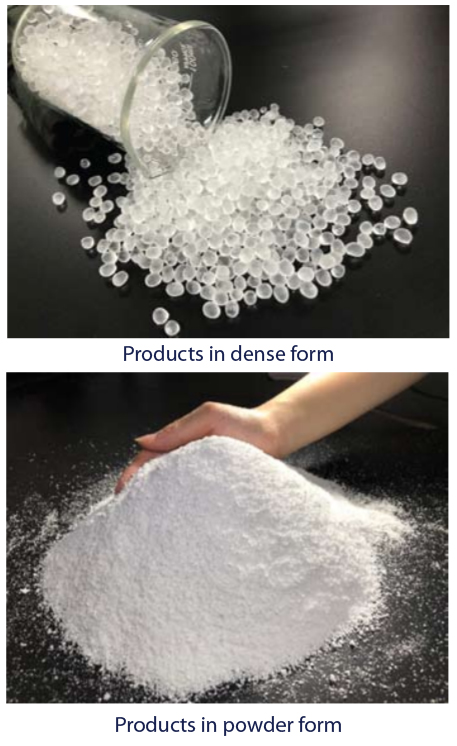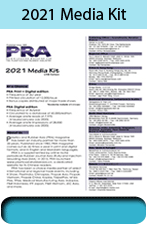Advertorial: Low/middle molecular weight hydrogenated styrenic block copolymer
by Bear Wang (Marketing supervisor, LCY GRIT Corp.)
Introduction
Hydrogenated styrenic block copolymers (HSBCs) provide excellent weather resistance and lower odour risks compared with un-saturated SBS or SIS. Since HSBCs have good resistance to degradation under UV light exposure, they have good colour stability and can withstand exposure to harsh outdoor environments.
HSBCs are suitable for plastics modification for consumer and industrial applications. Not only can they be used in plastics modification, but they are also widely used in adhesives, such as hot melt adhesives (HMAs) and solvent-based adhesives (SBAs). These block copolymers have good physical properties and are compatible with additives such as tackifiers and processing oils.
Taiwanese materials company LCY GRIT’s speciality HSBC grades have good compatibility with additives. They are easily combined with other materials and can be used in many applications.
- GP-9552 is a low molecular weight linear triblock polymer with an intermediate level of styrene content. This provides balanced mechanical properties, good compatibility with PO, PP, PE, EVA and is often used in hygiene applications. It is also widely used in coating and sealant applications due to its high strength.
- GP-9557D has a lower styrene percentage at 13%, and with 30% diblock content, making it softer and more elastic than conventional HSBC grades. GP-9557D is a high-flow polymer for adhesives, coatings, sealants, film and polymer impact modification.
- GP-9526D has a much higher diblock content (70%) and provides excellent flow in adhesive, sealant and coating applications. It also has better adhesive performance, especially excellent wetting property. It can be used for hygiene diaper applications that require high speed production at lower processing temperatures.
- GP-8501U is a 100% pure diblock SEP structure designed to provide cohesion performance, special thixotropic characteristics to increase sag resistance and enhance shear-thinning function to many products such as fiber optical cable filling compounds, cosmetic thickeners, sealants, coatings and energy damping.
- GP-9901 is a maleic anhydride grafted SEBS with increased polarity for overmoulding compounds and impact modifiers. The effective 1.5% MA grafting ratio results in excellent adhesion to metal or polar substrates, excellent compatibility with engineering plastics to improve low temperature impact strength. SEBS-g-MAH as compatibiliser could enhance the tensile mechanical properties as well as dynamic mechanical properties.

Styrenic block copolymers (SBCs) have a two-phase structure of hard end-blocks and softer rubber midblocks. The rubber blocks of HSBCs are very compatible with mineral oils. When a triblock HSBC is added to oils at sufficient quantities, the triblock structure causes oils to solidify, which results in flexible, strong, solid oil gels with adhesive properties and tackiness. The midblock segments provide elasticity. The diblock SEB copolymer results in balanced cohesive and adhesive properties.

HSBCs with ethylene/propylene (EP) structures, such as GP-8501U, are used at low concentration levels as thickeners for paraffinic oils to impart shear-thinning behaviour. It can also be added at higher level to lead to thixotropic greases. In this case, the polystyrene end-block segments with extended rubber arms to form micelle-like domains to create the thixotropic properties.
HSBC has high thermal stability and can be used over a wide range of temperature starting from -50 to 250°C. HSBC has several advantageous properties like strong shatter resistance, toughness and high transparency. Further, it can be sterilised by gamma irradiation and ethylene oxide. Therefore, SEBS can be used in medical applications.
A blend of HSBC/PP has excellent UV, ozone and chemical resistance and exhibits several advantages over flexible PVC used in medical applications. The greater advantage is that HSBC/PP blends are lighter than most other thermoplastic materials. Those low/middle Mw design SEBS have good compatibility with PP without additional plasticisers, and have lower contamination issues since the plasticisers can be avoided in drug applications.
They have greater temperature stability, which is up to 250°C, where PVC starts degrading at 130°C. They pose no known risk to health and environment while processing and can be easily recycled. PVC, on the other hand, releases hazardous chemicals like dioxins at process temperatures and can be difficult to recycle when blended with other polymers.
Product Stewardship

We confirm that all substances of those products are compliant with the pre-registration or registration required or exempted under REACH (EC 1907/2006), and that we have the actions to proceed with the registration of these substances.
GP-9552, 9557D and 9526D meet the FDA requirements contained in the Code of USA Federal Regulations in 21 CFR 177.1810 (a)(3) and (b)3.
All other ingredients used in the products meet the requirements of their respective FDA regulations of 21 CFR part 174 to 189.
Conclusion
LCY GRIT has developed advanced manufacturing technologies to produce high performance SBC polymers with high precision.
Currently, we offer a broad selection of low/middle molecular weight HSBC product lines for special adhesive, sealant, coating, oil-gel formulations and plastics modification. These products are highly compatible with PO, PP, PE, EVA plastics, and also offer product and process optimisation.
We plan to further develop polymers that provide new solutions in sustainability and efficiency for our customers.
(PRA)
Subscribe to Get the Latest Updates from PRA Please click here
©2021 Plastics and Rubber Asia. All rights reserved.

©2020 Plastics and Rubber Asia. All rights reserved.
Home Terms & Conditions Privacy Policy Webmail Site Map About Us
















